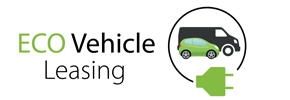EV Driving Guide
Driving an Electric Car: A Beginner's Guide

Driving an electric car might feel like stepping into the future—but once you're behind the wheel, you’ll quickly find it’s simple, smooth, and in many ways easier than a petrol or diesel car.
This guide walks you through the basics of driving an EV and shares some practical tips to help you get the most out of every journey.
Starting and Driving an Electric Car
If you're used to driving a petrol or diesel car, here's what to expect when you make the switch.
- Powering up: Most EVs turn on with a press of a ‘Start’ or ‘Power’ button. Some, like Teslas or VW ID models, power up automatically when you sit down.
- Gear selection: Forget traditional gear sticks—many EVs use simple selector switches or rotary dials to shift between Drive and Reverse.
- No clutch, no gears: EVs are single-speed. There’s no clutch to press and no gear changes to worry about. That means no stalling and no jerky starts—just smooth, silent acceleration.
What’s It Like to Drive?
Electric cars are incredibly responsive thanks to instant torque from the motor. That means they accelerate quickly (sometimes very quickly), even with a light press of the pedal.
They’re also quiet. At low speeds, you’ll barely hear anything—just a soft whirr. It’s peaceful inside the cabin and makes for a much more relaxed drive.
But a quick heads-up: you might find yourself picking up speed faster than expected. Be gentle on the accelerator until you get used to it.
Regenerative Braking – What Is It?
Most electric cars feature regenerative braking, a system that slows the car and recaptures energy to charge the battery. When you ease off the accelerator, the car starts to slow on its own—no brake pedal required.
Some EVs offer ‘one-pedal’ driving, where lifting off the accelerator slows the car all the way to a stop. It takes some getting used to, but once you’ve mastered it, you’ll find it makes stop-start driving effortless.
You can often adjust the strength of the regen braking using:
- Paddles behind the steering wheel
- Buttons near the gear selector
- Or options in the touchscreen menu
How to Maximise Driving Range
Range anxiety is a common concern, but with a few simple habits, you can stretch your EV’s range further:
- Drive smoothly – Avoid harsh acceleration or braking
- Lift off early – Use regenerative braking to slow down
- Pre-condition your car – Warm the cabin and battery while plugged in before you leave
- Reduce energy usage – Use heated seats or steering wheels instead of cabin heating
- Use eco-driving modes – Most EVs offer efficiency-boosting settings
Many EVs come with an app that lets you monitor range, find chargers nearby, and even start pre-conditioning before you set off.
Do EVs Make a Sound?
Yes—by law, new electric cars must emit an artificial noise at low speeds to alert pedestrians. Expect a futuristic hum or whir from speakers outside the vehicle.
But they’re still very quiet overall, especially in town. So take extra care when reversing or driving through pedestrian areas—people might not hear you coming.
Can I Take My Driving Test in an EV?
You can—but with a catch.
- You can take your test in an electric car
- You’ll receive an automatic-only licence, meaning you can’t drive a manual petrol or diesel vehicle unless you take another test later
For most new drivers, that’s no issue—more and more cars are automatic-only these days.
What Else Should I Know?
Before setting off on longer journeys in an EV, route planning is key—especially if you’ll need to charge along the way.
Other things to bear in mind:
- EVs are heavier due to battery weight, which can slightly affect handling in corners.
- Some EVs have rear-mounted motors, leaving extra storage space under the bonnet (known as a frunk).
- Batteries are under the floor, which lowers the centre of gravity and improves ride stability.
- Charging cables are usually stored under the boot floor or in a dedicated bag.
Once you adjust to the differences, driving an electric car becomes second nature—and petrol or diesel cars can feel noisy and unnecessarily complicated by comparison.

Final Thought:
It’s Not About How You Drive—It’s How You Think
The real shift when switching to electric isn't how you drive—it's how you plan.
Charging instead of refuelling. Preserving energy instead of burning it. Driving with more intention and less stress.
But once you’re familiar with the routine, it all clicks into place.
Thinking About Making the Switch?
Whether you're EV-curious or ready to go electric, we're here to help.
Speak to our team for expert advice
Or call us on 01527 222555
We’ll help you find the right electric car—or van—for your lifestyle or business.
